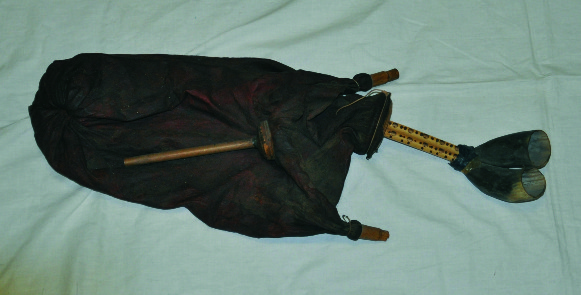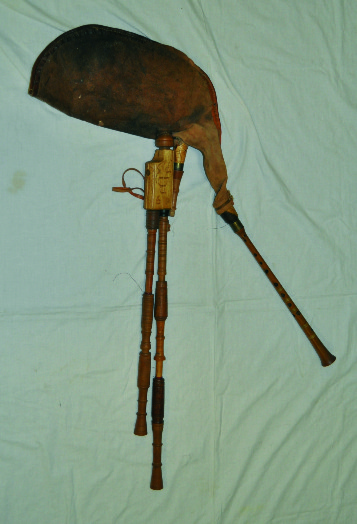The Bagpipe Society
Bagpipes at the Bate
A casual visitor to the Bate Collection, University of Oxford, would probably be overwhelmed by the vast number of musical instruments that form the permanent display. There are over 2000 items in the Collection, including an array of orchestral woodwind, brass, some strings and percussion. The instruments exist as an evolutionary display, arranged to demonstrate the various technical changes through the many years of instrument development. A bagpipe person might rightly feel a little disappointed that bagpipes, as a classification of instruments, have so little representation in the Collection. This is not due to some innate curatorial prejudice rather being a result of the way the collection has been amassed over the last several decades, being originally from the collections of specialist in other areas. Accordingly, bagpipe collections had gone to other museums. Having said that, the Bate does have a modest, representative selection of complete instruments plus practise chanters and other components. The list includes a Tunisian Zukra, an Eastern Ukrainian Duda, a Flemish-style Dudelsack and a Gaita Gallega from Santiago de Compostella.

Sadly, none of the instruments are currently in playing condition and, unless students or researchers are inclined to take a closer interest that is likely to remain the case. It is the policy of the Bate to allow a high level of access, even to the point of playing instruments in the Collection. However, with our limited resources we do have to prioritise areas of the Collection for maintenance, repair and restoration. Having said that, we do take our responsibilities for the care and conservation of objects very seriously. The environment in the gallery is constantly monitored and controlled to ensure appropriate levels of temperature and humidity so as to minimise and agents of deterioration.
Bagpipes do pose another challenge as museum artefacts. Due to their complex construction and “Three-dimensionality”. There is a real problem in trying to present them in as meaningful an arrangement so as to enlighten visitors and somehow explicate their playing position to people unfamiliar with them. Perhaps the only means of achieving that to an acceptable degree would be to have recitalists demonstrating them in concert. Another challenge for museums is the need to keep the leather of the bags in good condition. This is probably beyond the capabilities of the average museum Conservator and would require the attention of a bagpipe specialist if we were to put them into order. This problem is not common to most museum collections which generally prohibit the playing of instruments. Accordingly, there is not a great demand for specialist bagpipe restorers in the museum milieu, which is rather a shame.

It is probably the case that most music museum in the UK have examples of bagpipes in their collections. The foremost venues include the Morpeth Chantry, the University of Edinburgh Collections and the Pitt Rivers Museum. People wishing to explore historical collections world-wide might find the Musical Instrument Museum Online (MIMO) a useful starting point: http://www.mimo-international.com/MIMO/
For our own current online presence, we have produced a checklist of objects which can be downloaded in a pdf format: http://www.bate.ox.ac.uk/assets/files/Bagpipes.pdf. We do encourage visitors and researchers to come and use the Collection and you are welcome to make an appointment to examine our instruments. bate.collection@music.ox.ac.uk
From Chanter Winter 2016.
- Data Processing Notice (GDPR)
@BagpipeSociety on X (formally known as Twitter)
TheBagpipeSociety on Instagram
 BagpipeSociety on Facebook
BagpipeSociety on Facebook
Something wrong or missing from this page? Let us know!
